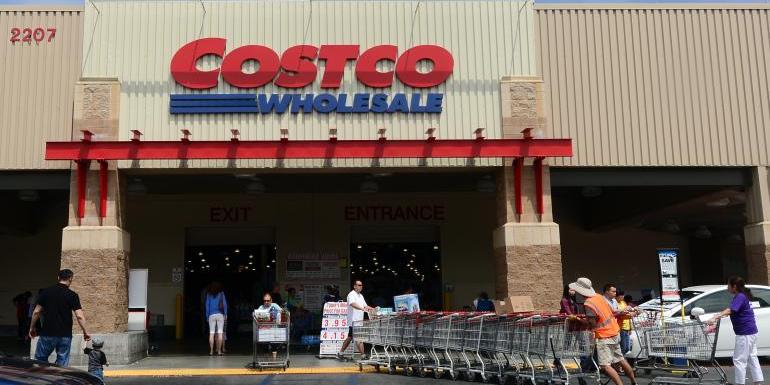
Costco established the warehouse club retail business model, which relies on bargaining power, a no-frills shopping atmosphere, supply-chain efficiencies, and customer-friendly typical markups on branded products. Now, Costco is transforming its no-fuss wholesale business into a global brand.
Membership Fees
Costco has become a significant shopping destination for consumers across all income levels, as well as small businesses. This is foremost because Costco derives approximately 75% of its operating profits from membership fees.
Costco derives nearly all of its profits from membership fees, allowing the firm to sell many of its products at little to no margin, and sometimes at a loss. These loss-leading capacities are reinforced by the firm’s deployment of gasoline to drive store traffic. When blended with membership renewal rates above 85%, these characteristics give Costco a defensible competitive advantage.
Succeeding Overseas
There is little room for more household penetration because Costco already has more than 70 million members; historical sales and earnings growth forecasts may not be justifiable.
In 1985, Costco opened its first warehouse outside the U.S. in Canada. Currently, Costco has 187 locations in Canada, Mexico, the U.K., Japan, Taiwan, Korea, and Australia. Overseas sales more than doubled from 2008 to 2013. While other traditional American retailers grapple to stay competitive in international markets, Costco’s no-fuss warehouse-shopping model is a new experience for international consumers. Remarkably, people in Asian markets are acclimatizing well to shopping in bulk—although it means fastening pallets of toilet paper and enormous teddy bears to the back of their motorbikes as they whizz away from the Costco parking lot.
A Good Living Wage for Employees
Costco has long been known for paying higher wages and offering more liberal benefits than its rivals have—and generating greater sales per square foot, too.
Unlike most retailers, Costco does not see raising employee salaries and growing profits as opposing objectives. While the average hourly wage for a full-time worker at Wal-Mart is $12.81, Costco pays its workers an average of nearly $21. Costco sees the return on this investment in its low employee turnover rates: Just 10% in 2013 and 7% for employees who have worked at least one year. High employee retention permits Costco to reduce considerably on training costs.
Superior Customer Experience
- A guarantee of quality. Their model promises fundamentally “100% satisfaction” and they mean it. Their return policy stands out among the best in many retail categories and they are exceptionally relaxed about fulfilling it. Costco will take back an empty package of any food, if you are not satisfied, and give you your money back.
- A extraordinary selection of products that is a bit more refined than most but at a pretty good price. A typical Costco store only carries about 5,000 items, and there is a bunch of those items that rotate regularly.
- The “treasure hunt” model. The store does have a layout, but within that layout, everything is rotated frequently to keep you looking. This would never work at Walmart or Target —because you’d get frustrated. However, at Costco, it’s part of the fun to “treasure hunt” a new find. They have a very wide selection of very different merchandise types which offers an unique convenience level as a shopper.
CEO Jim Sinegal once said, “If that stuff doesn’t really turn you on, then you’re in the wrong business.” Costco caps margins at a sacrosanct 14% on branded goods, pushes buyers to find creative ways to lower prices and add value, and gets store managers to crank up their efficiency efforts. Under Sinegal’s leadership, Costco has gained a reputation for bargain prices and surprise designer goods.